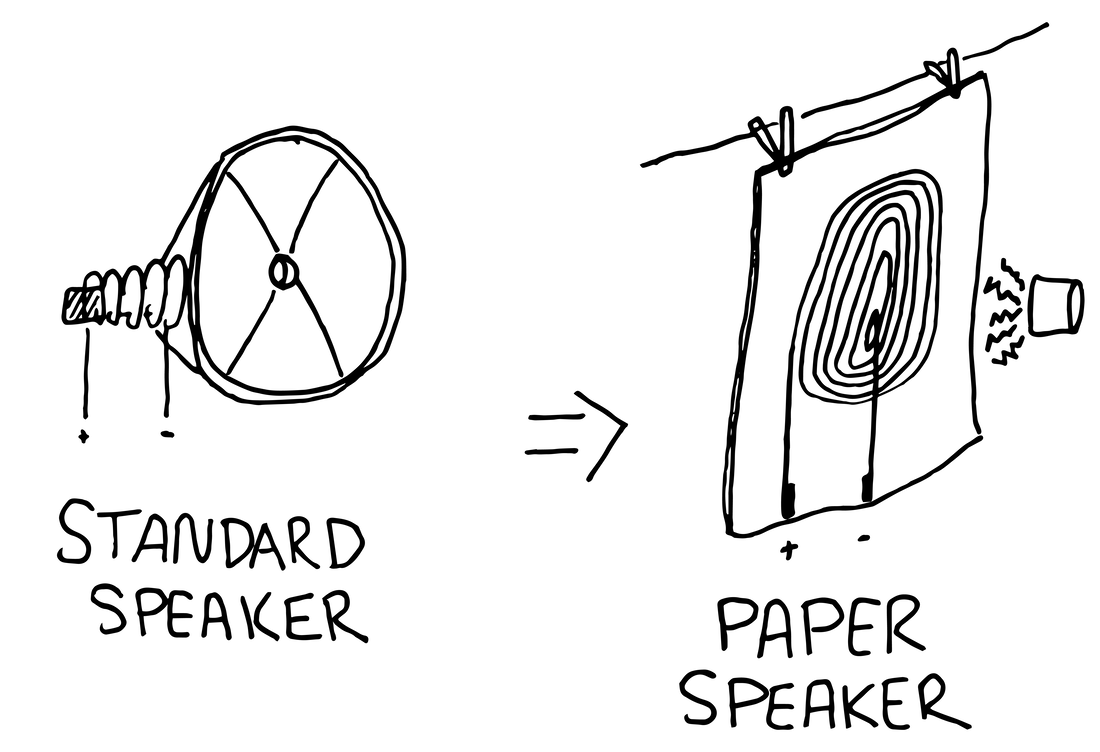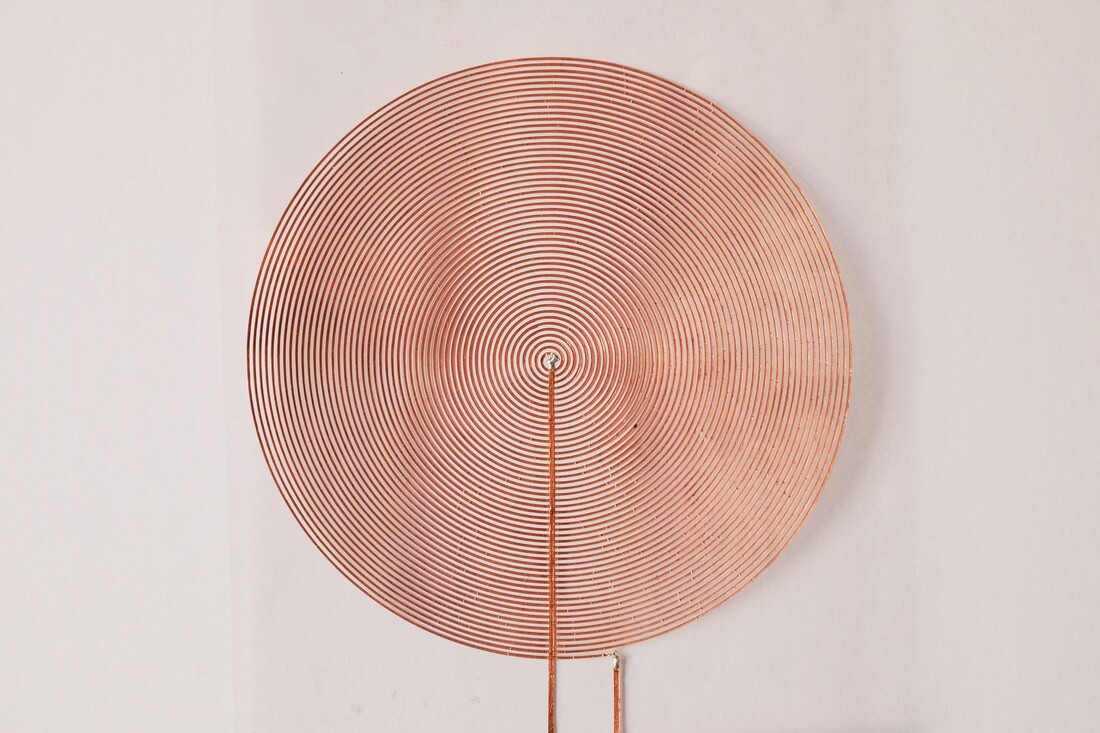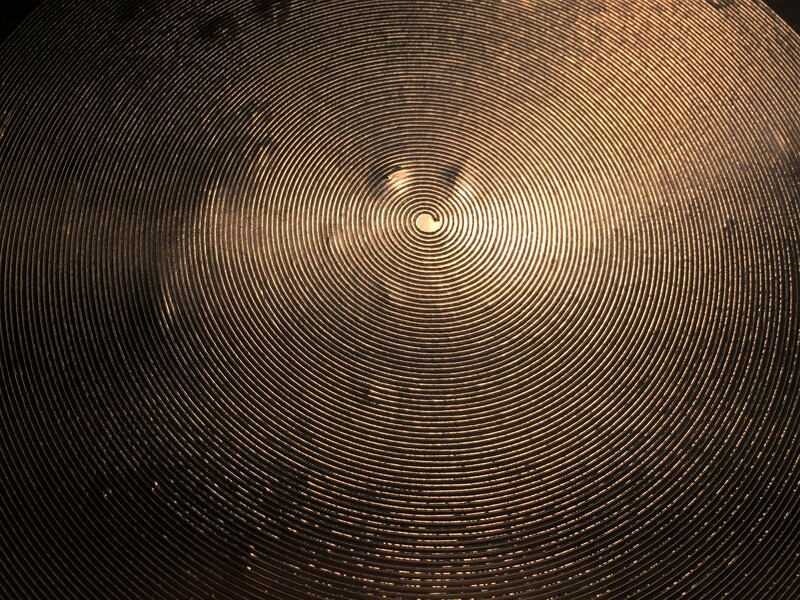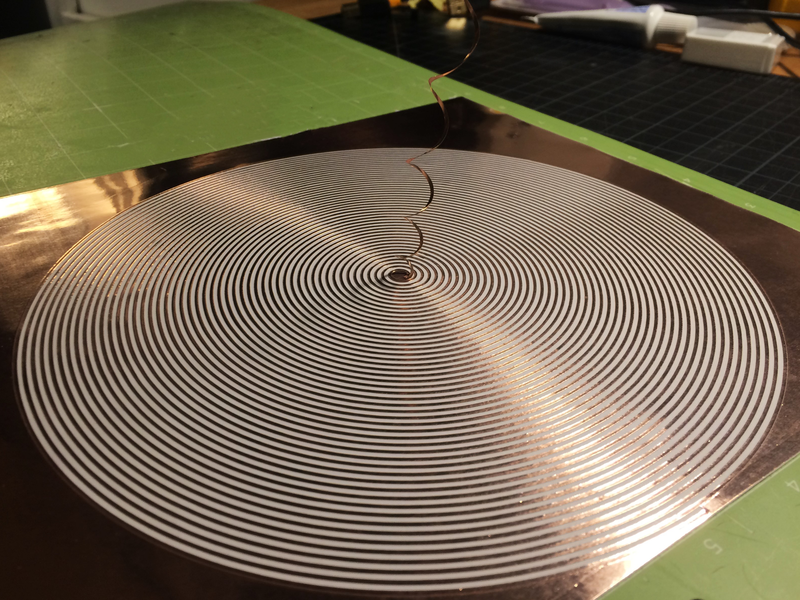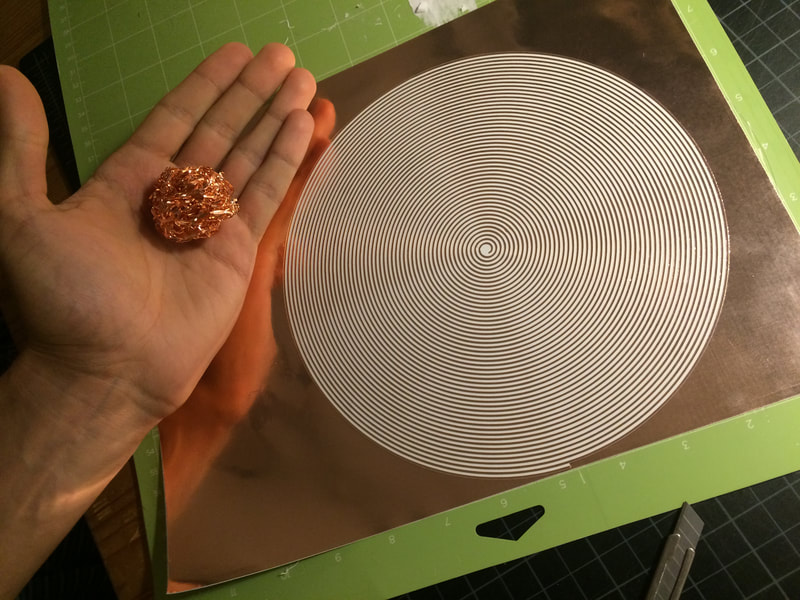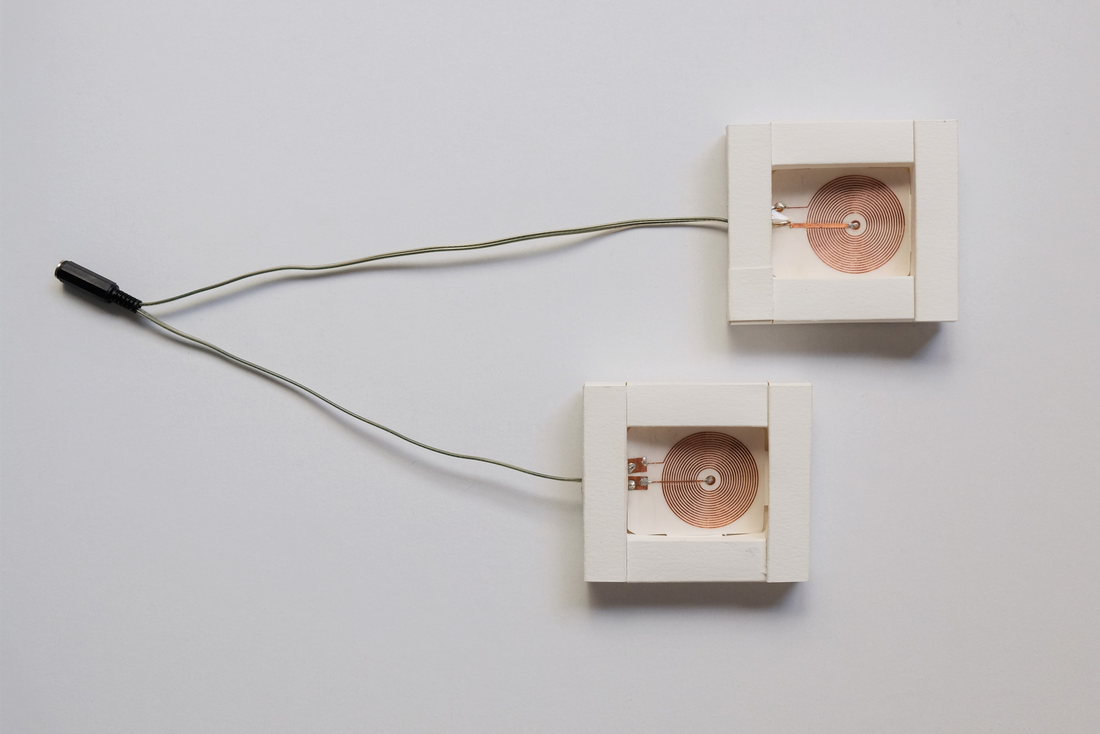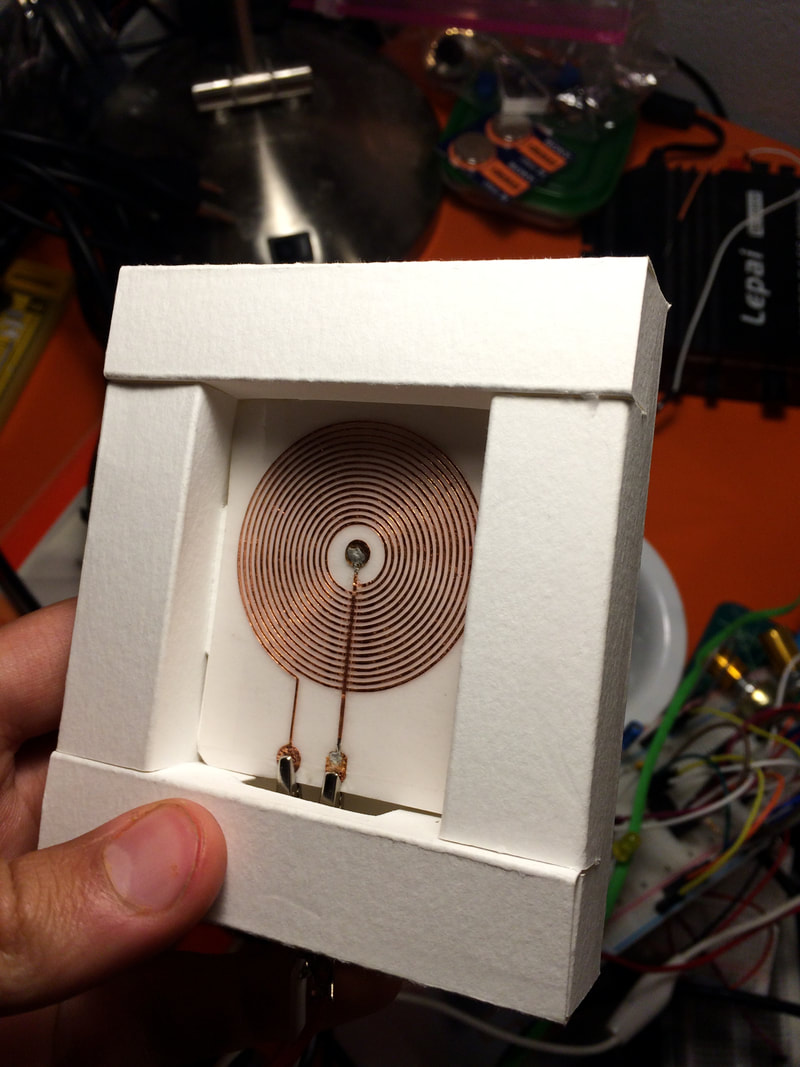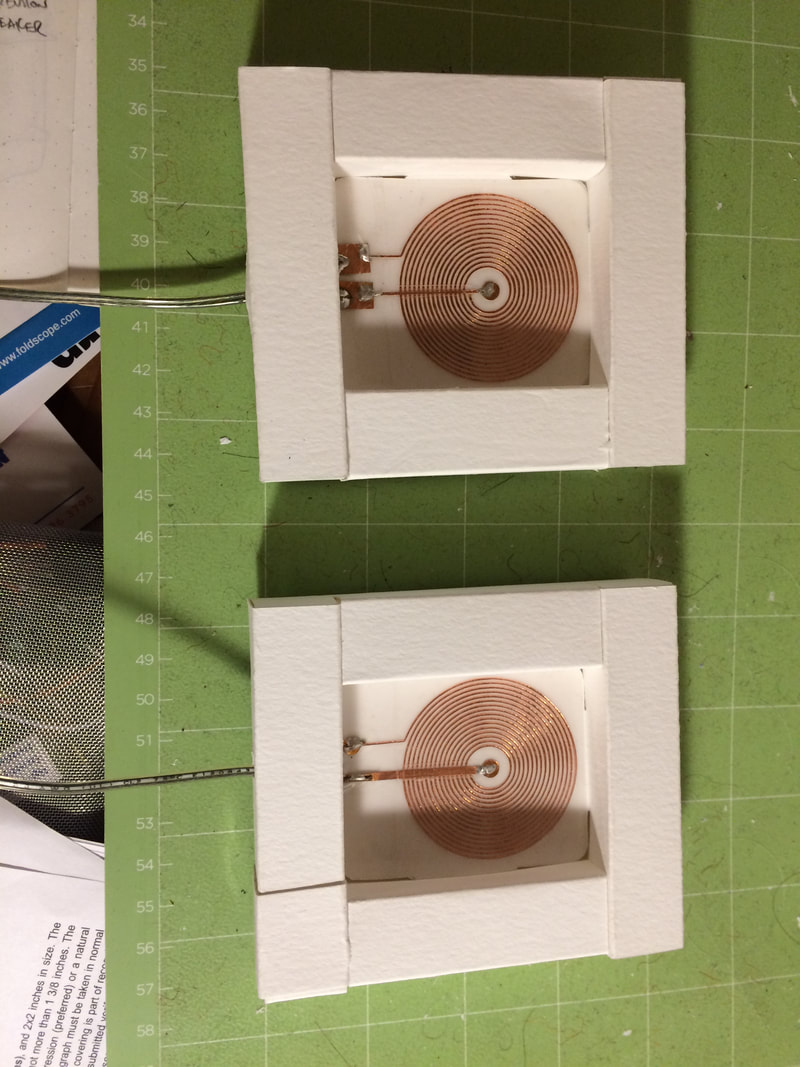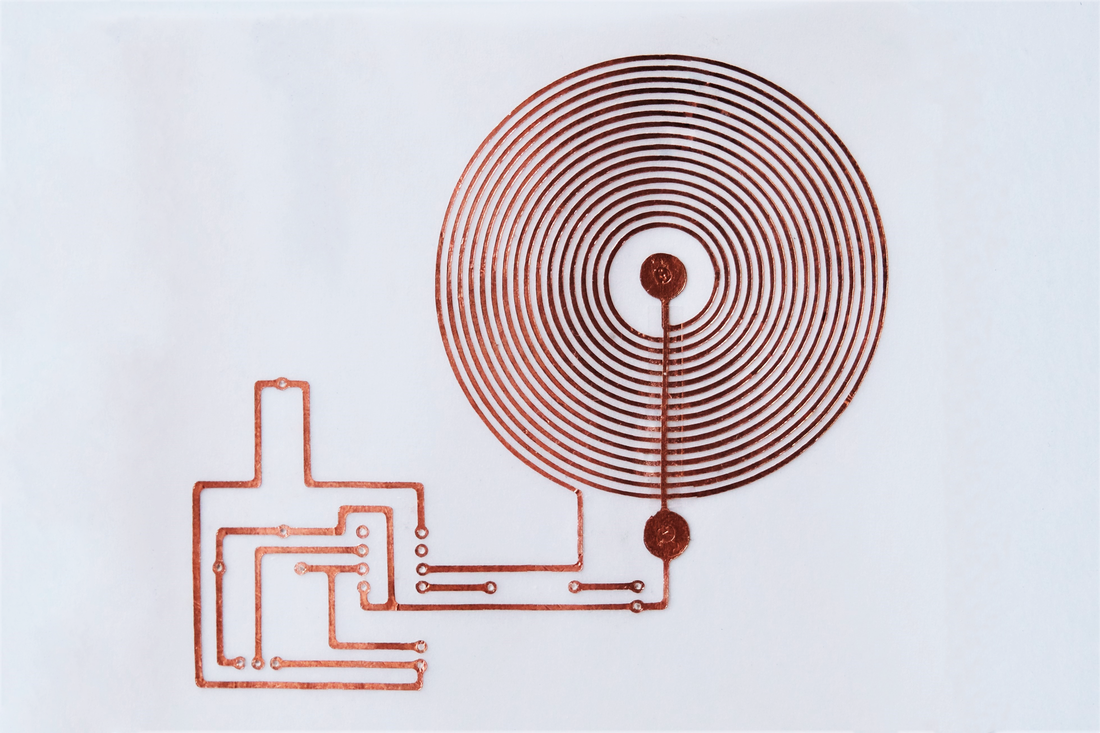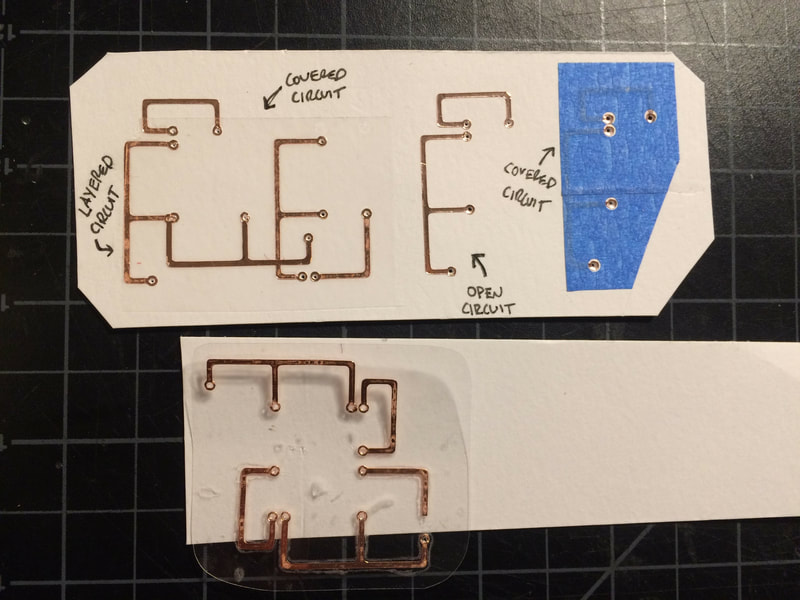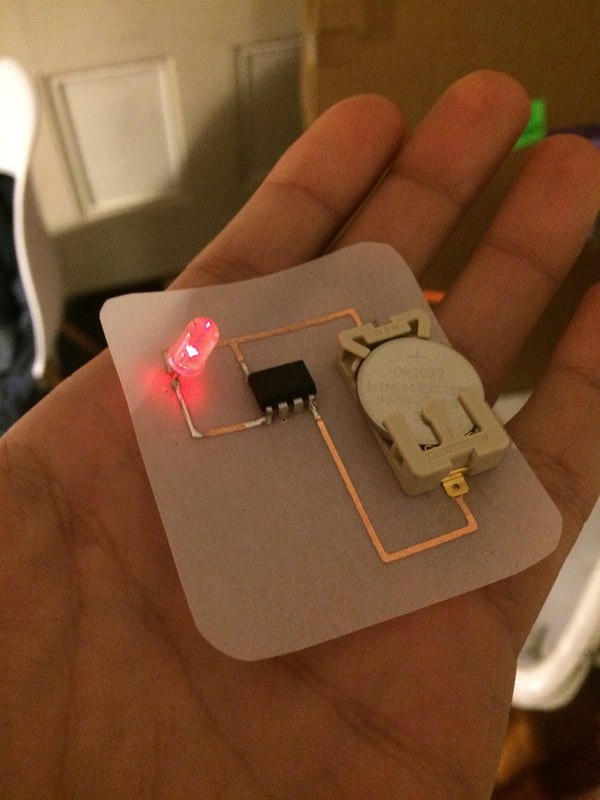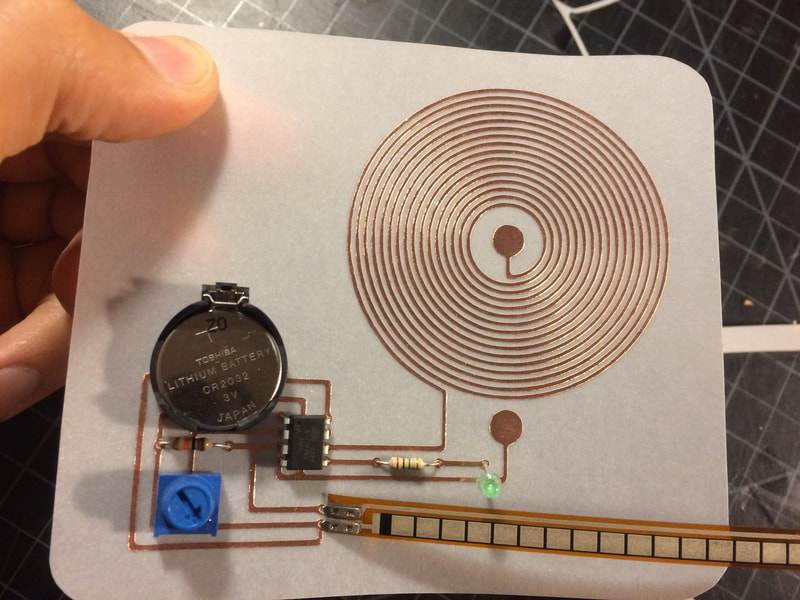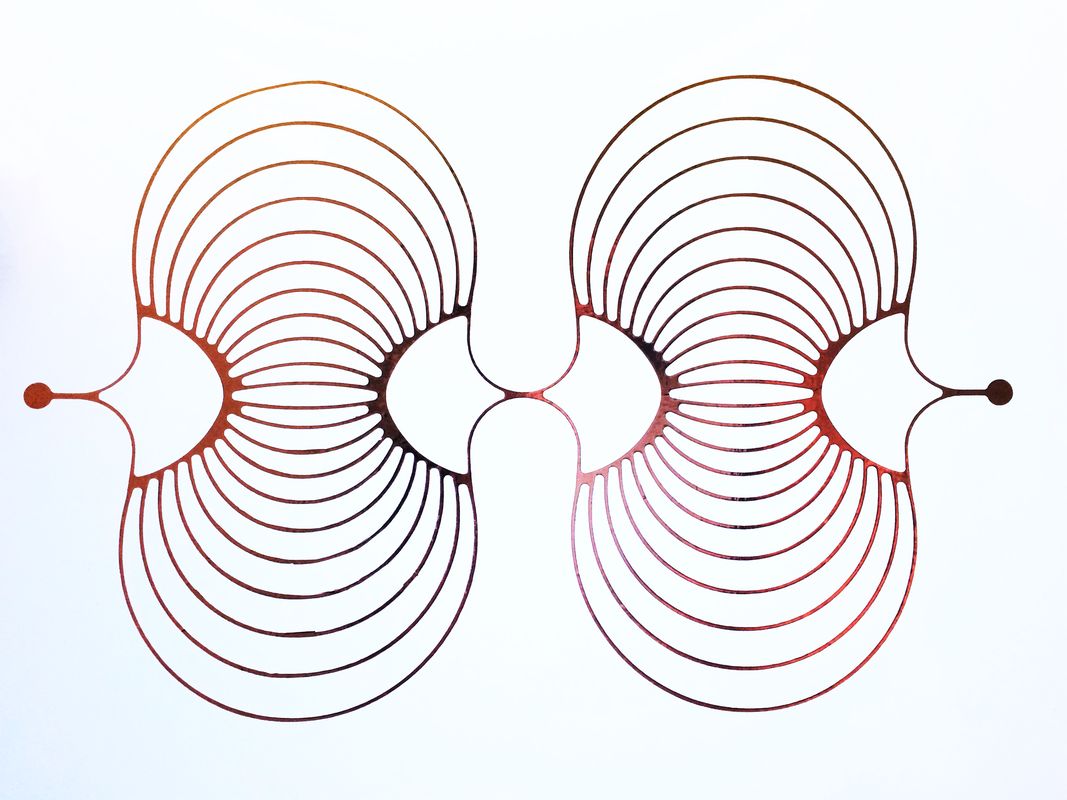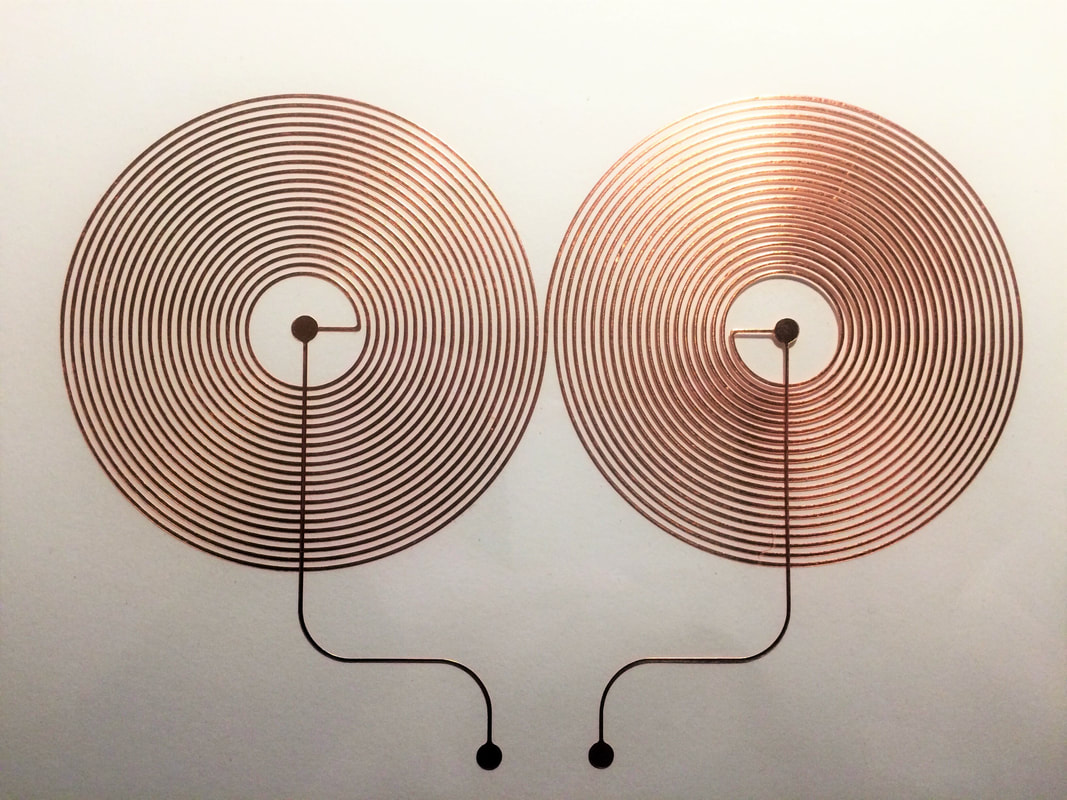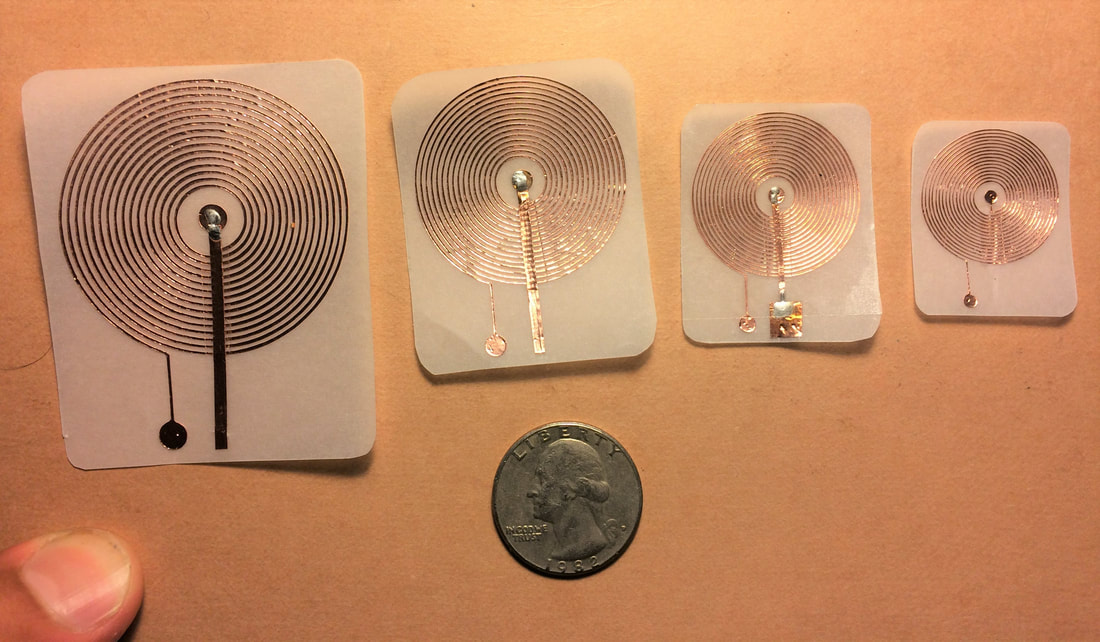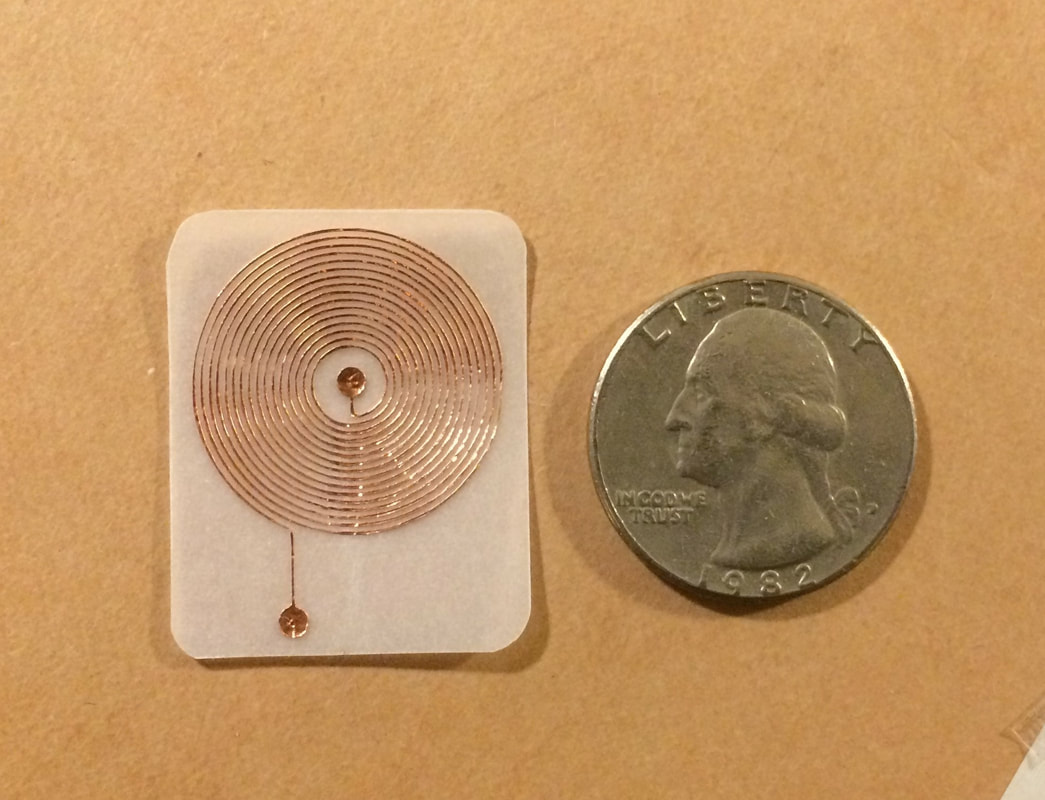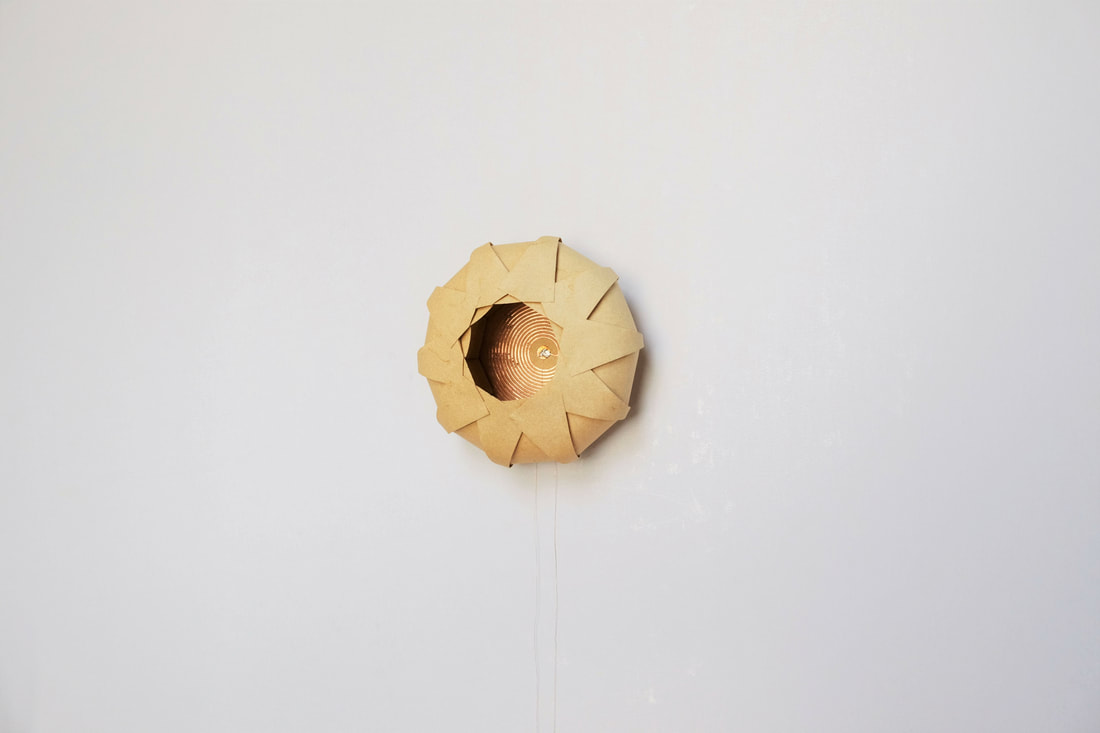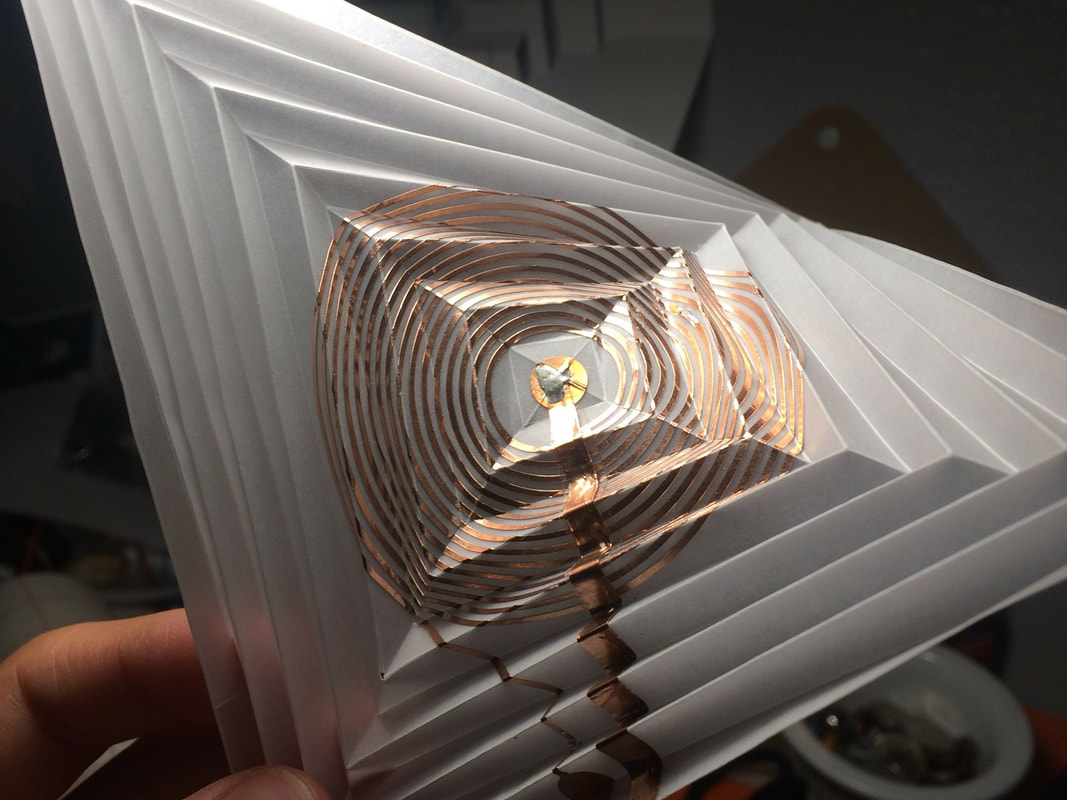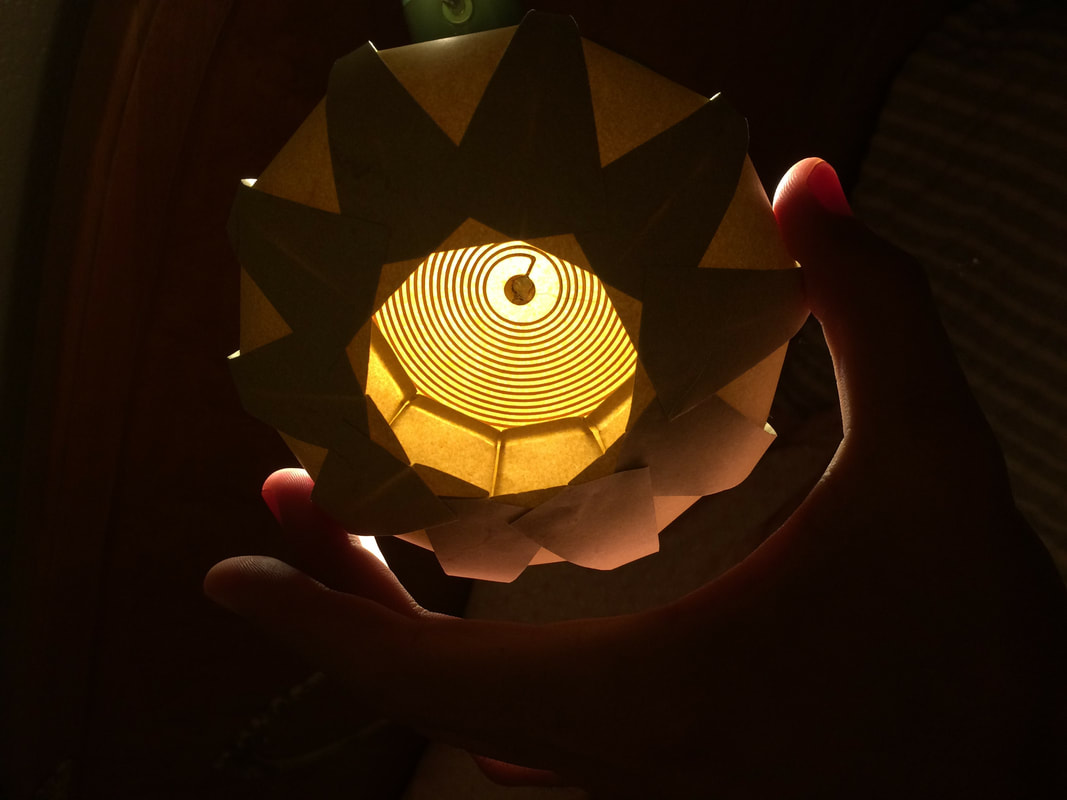The simplest version of a flat speaker is a giant copper spiral. Cut on a vinyl-cutter from an adhesive copper sheet, the copper circuit trace is transferred to a Mylar sheet which acts a light-weight and flexible yet rigid diaphragm. The trace running from the spiral's center is insulted by thin layer of packing tape as to insure that the coil isn't shorted. Like a vinyl record, the speaker reveals a clear flow of charge- both from outwards to inwards and from inwards to outwards as the circuit oscillates with input frequencies.
The first and most exciting experiment is to learn how a magnet interacts with a spiral circuit trace to created sound. Through dance and play, you can pan the source of sound, filter frequencies, and manipulate the speaker's loudness, simply by rotating and moving the magnet closer and farther from the coil. By allowing people to control a speaker's permanent magnet, paper speakers inspire countless questions and new experiments.
Paper speaker lend themselves to wonderful explorations in folded sonic forms and origami acoustical experiments. Housing miniature paper speakers inside folded paper boxes generated a set of simple paper headphones. Imagine headphones that are easily recyclable and flat-pack between uses.
In addition to using the vinyl cutter to cut spiral speaker traces, it is equally exciting to cut simple printed circuit boards, carving the traces for basic electronic components. Inspired by several DIY synthesizers, I created my own paper synthesizer coupled with it's own paper speakers. By clearly laying out a circuit's components, electronics becomes more tangible and more intuitive to understand through physical mapping. While a bend sensor controlled frequency, a potentiometer controlled volume, creating a simple 2D theramin.
I became curious about how the geometry of speaker spirals influenced loudness, timbre, and frequency response so I explored a range of speakers in different shapes and sizes.
Inspired by my love for origami, I wanted to discover where paper folding and spiral speakers might collide. By first adhering a spiral copper trace and then folding the sheet material into a 3 dimensional form, I could learn how origami might support the focus of sound or the boundary conditions of the speaker.
I had the opportunity to partner with world famous origamist and origami theorist, Robert Lang, and together we created the first singing origami zen bowl, derived from his beautiful bowl designs.
In discovering that the bowl was also a beautiful diffuser of light, I hope to continue to investigate the relationships between light and spiral speakers. I wonder how I might create a diaphragm material that changes how it lets in light relative to the frequencies or amplitude of sound projected through it.
|
